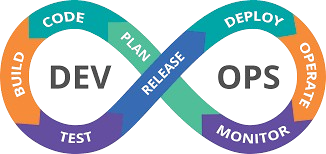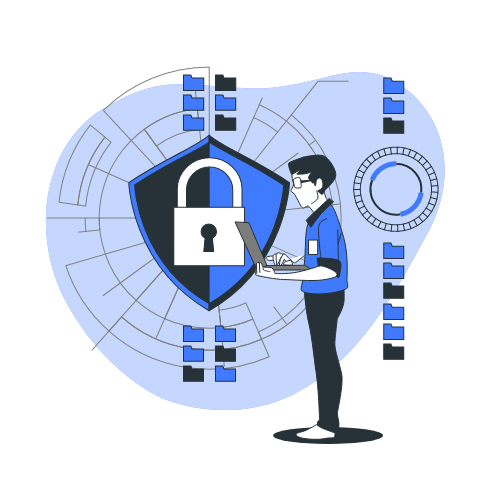In the world of software development, the rise of DevOps has revolutionized how teams build, deploy, and manage applications. However, as security threats become more sophisticated, there is a growing need to integrate security practices into the DevOps pipeline, leading to the emergence of DevSecOps. Both DevOps and DevSecOps aim to streamline software delivery, but they differ in how they approach security. This blog post will explore the key differences between DevOps and DevSecOps, and why security is becoming an integral part of modern software development.
1. The Basics: What is DevOps?
DevOps is a combination of development (Dev) and operations (Ops) that emphasizes collaboration, automation, and continuous integration/continuous delivery (CI/CD) to accelerate software development and deployment. The core principles of DevOps include:
- Automation: Automating repetitive tasks such as testing, deployment, and monitoring to increase efficiency and reduce errors.
- Collaboration: Bridging the gap between development and operations teams to ensure smooth, continuous delivery of software.
- Continuous Improvement: Iteratively improving processes and practices to enhance software quality, speed, and reliability.
In essence, DevOps focuses on speeding up the development process, reducing time-to-market, and improving the overall efficiency of software delivery.
2. The Basics: What is DevSecOps?
DevSecOps is an evolution of DevOps that integrates security practices into the entire software development lifecycle (SDLC). The goal is to ensure that security is not an afterthought but a fundamental aspect of every stage of development. The core principles of DevSecOps include:
- Security Automation: Incorporating automated security checks into the CI/CD pipeline to identify and address vulnerabilities early in the development process.
- Shift Left Security: Moving security testing and practices earlier (“left”) in the development lifecycle, ensuring that security is integrated from the start.
- Collaboration Across Teams: Encouraging collaboration between development, operations, and security teams to ensure that security concerns are addressed throughout the SDLC.
- Continuous Security Monitoring: Implementing continuous security monitoring to detect and respond to threats in real-time, even after deployment.
DevSecOps aims to create a culture where security is everyone’s responsibility, and secure practices are embedded into the development process.
3. Key Differences Between DevOps and DevSecOps
- Focus on Security:
- DevOps: The primary focus is on speed, efficiency, and collaboration between development and operations. Security is often considered at later stages or handled by separate teams.
- DevSecOps: Security is a core focus, integrated throughout the entire development lifecycle. It ensures that security practices are automated, continuous, and collaborative.
- Incorporation of Security Tools:
- DevOps: DevOps pipelines may include basic security checks, but they are not always comprehensive or integrated into every stage.
- DevSecOps: DevSecOps incorporates a wide range of security tools and practices, such as static code analysis, vulnerability scanning, and penetration testing, directly into the CI/CD pipeline.
- Shift Left Philosophy:
- DevOps: DevOps emphasizes early testing and automation, but security testing often occurs later in the process, after code has been written.
- DevSecOps: DevSecOps embraces the “shift left” philosophy, ensuring that security testing happens early and continuously throughout development. This approach reduces the risk of vulnerabilities and ensures that security issues are addressed before they reach production.
- Collaboration Across Teams:
- DevOps: Collaboration primarily occurs between development and operations teams, with security often being a separate concern.
- DevSecOps: DevSecOps fosters collaboration between development, operations, and security teams, creating a unified approach to delivering secure software.
- Response to Threats:
- DevOps: DevOps may involve post-deployment monitoring, but responses to security threats are typically handled by dedicated security teams.
- DevSecOps: DevSecOps includes continuous security monitoring and quick response mechanisms, enabling teams to detect and mitigate security threats in real-time.
4. The Growing Importance of DevSecOps
As cyber threats become more prevalent and regulations around data protection tighten, integrating security into the development process is no longer optional. DevSecOps addresses this need by embedding security into every phase of the SDLC, ensuring that applications are secure by design.
In 2024, the adoption of DevSecOps is not just about protecting against vulnerabilities; it’s about building a culture of security where everyone is responsible for safeguarding the software. Organizations that embrace DevSecOps are better positioned to deliver secure, reliable applications that meet both business objectives and regulatory requirements.
Conclusion
DevOps and DevSecOps share a common goal of improving software delivery through automation and collaboration, but they differ in their approach to security. While DevOps focuses on speed and efficiency, DevSecOps integrates security practices throughout the development lifecycle, ensuring that security is a fundamental part of the process.
As organizations continue to navigate the complexities of modern software development, the importance of DevSecOps will only grow. By adopting DevSecOps, businesses can deliver software that is not only fast and reliable but also secure, protecting both their assets and their customers in an increasingly digital world.



